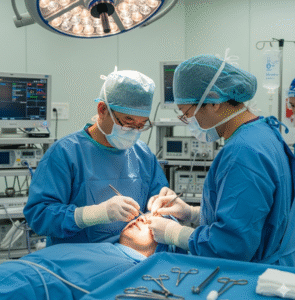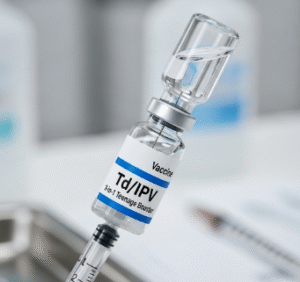Overview
Uterine Sarcoma is a rare and aggressive type of cancer that arises from the muscle or connective tissue of the uterus. Unlike the more common endometrial carcinoma, uterine sarcoma tends to grow and spread quickly, making early diagnosis and treatment critical. It typically affects women after menopause and often presents with abnormal vaginal bleeding or a rapidly enlarging uterus.
What is Uterine Sarcoma
Uterine Sarcoma is a malignant tumor that develops in the muscle layer (myometrium) or connective tissues of the uterus, rather than the endometrial lining. It accounts for less than 5% of all uterine cancers and includes several subtypes, such as leiomyosarcoma, endometrial stromal sarcoma, and undifferentiated uterine sarcoma. Because of its aggressive nature and potential for early spread, uterine sarcoma requires prompt medical attention.
Symptoms
The symptoms of uterine sarcoma may be similar to those of more common benign conditions, such as fibroids, but tend to be more persistent or rapidly worsening:
- Abnormal or postmenopausal vaginal bleeding
- Pelvic pain or pressure
- Unusual vaginal discharge
- Rapid enlargement of the uterus or abdominal mass
- Feeling of fullness or bloating
- Pain during intercourse
- Weight loss or fatigue (in advanced cases)
Causes
The exact cause of uterine sarcoma is not fully understood, but it is believed to develop due to genetic mutations in the uterine muscle or stromal cells. Unlike endometrial cancer, it is not clearly linked to hormone imbalances.
Risk Factors
- Age over 50
- History of pelvic radiation therapy
- Long-term use of tamoxifen (a breast cancer medication)
- History of retinoblastoma or certain hereditary cancer syndromes
- Family history of uterine or soft tissue sarcomas
- Rapid growth of presumed fibroids (especially after menopause)
Complications
Due to its aggressive behavior, uterine sarcoma can lead to:
- Local invasion into nearby pelvic organs
- Distant metastasis (lungs, liver, bones)
- Postoperative complications after hysterectomy
- Infertility if the uterus must be removed
- Recurrence even after treatment
- Severe anemia from bleeding tumors
- Shortened life expectancy in advanced cases
Prevention
There is no guaranteed way to prevent uterine sarcoma, but the following may reduce risk or allow early detection:
- Avoid unnecessary pelvic radiation
- Routine gynecological evaluations, especially after menopause
- Report abnormal bleeding or rapid uterine growth promptly
- Careful monitoring of fibroids in older women
- Discuss tamoxifen risks with your doctor if using it for breast cancer
Treatment Options in Korea
South Korea offers advanced, multidisciplinary cancer care for women with uterine sarcoma, focusing on early diagnosis, surgical expertise, and modern oncologic therapies.
- Diagnosis:
- Pelvic ultrasound, MRI, or CT scan for mass characterization
- Endometrial biopsy (may not always detect sarcoma)
- Surgical biopsy or hysterectomy for definitive diagnosis
- PET scans to check for metastasis
- Treatment options:
- Surgery:
- Total hysterectomy (removal of uterus)
- Bilateral salpingo-oophorectomy (removal of ovaries and fallopian tubes)
- Lymph node dissection in some cases
- Radiation therapy to reduce risk of local recurrence
- Chemotherapy, especially for high-grade or metastatic sarcomas
- Targeted therapy or immunotherapy in select subtypes under clinical trials
- Surgery:
- Supportive care:
- Fertility counseling, when applicable
- Palliative care for symptom relief in advanced stages
- Regular follow-up imaging to detect recurrence
Korean cancer centers provide state-of-the-art imaging, personalized oncology planning, and international-standard cancer protocols, giving patients access to both curative and palliative care options tailored to their clinical stage.













